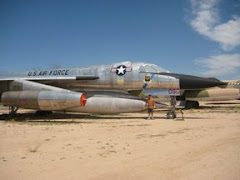
I got a comment a month or so ago concerning aircraft from Walla Walla Army Air Base. I took a look through my accident reports and located one in which the aircraft had originated from Walla Walla. I present, for your reading enjoyment, in a slightly more reader friendly format, the accident report of B-17F 42-5289 (condensed version).
B-17F 42-5289 was on a training mission out of Walla Walla AAB on the morning of Augst 10, 1943. It crashed at 0530 due to an engine fire. Seven crewmembers were lost, though three survived. The aircraft was a total loss.(From S.Sgt. Marvin D. Anderson’s account)
Staff Sergeant Marvin D. Anderson, the engineer, was sitting on the floor of the top turret watching the instruments, when “All of a sudden the co-pilot, Lt Abel said, ‘No. three’s on fire.’” He got up and looked out to find the engine burning so hot that the cowling was melting and blowing off in the slipstream. He told the Pilot to feather it while he and the co-pilot attempted to put the fire out with the extinguisher carried by that ship. It did not work. He then feathered the prop and pushed the power to full on number two, which for some reason the pilot had reduced. The bombardier came up from the nose and asked what to do. Sgt. Anderson told him to salvo the bombs. At that point everyone began to put on their chutes. He then went through the bomb bay where he found that the bombardier had indeed dropped the bombs, but failed to open the bomb bay doors. Sgt. Block was jumping on the doors. Sgt. Anderson told him to get off the doors and then used the emergency release. The bombs fell away into the Columbia River. He called to the pilot to get out from over the river so they could jump. He waived Sgt. Block over the side and as he was watching the pilot come toward the bomb bay the fuselage melted away and the bomb bay was filled with smoke, flame, and molten metal. He jumped and floated to safety.
B-17 42-5383 was flying at 12,000 feet at 0528 and noticed a fire on the ground about two miles north of the range, across the river. When they let down to take a look, they saw three chutes and three men on the ground. They orbited giving details by radio to Boardman tower until a civilian car showed up. They landed back at Walla Walla at 0800.

The abstract of the accident says: The accident happened “12 MILES WEST OF PATTERSON COMMA OREGON AUGUST 10 COMMA 1943 AT APPROXIMATELY 0530 PERIOD NUMBER 3 ENGINE CAUGHT ON FIRE COMMA 7 FATALITIES PERIOD PLANE MANUFACTUREDJANUARY 4 COMMA 1943.” It goes on to say that the gear on that plane had been damaged in a previous accident, but the engines were new. Two things don’t add up. Patterson is in Washington State, on the North side of the river, while Boardman Range is in Oregon on the South side of the river. Elsewhere in the report it mentions that the crashed was only 2 miles West of Patterson.

The wings were torn from the aircraft and parts were strewn over a mile along the flight path. Examination of the wing indicated an internal explosion. This explosion would explain why the rest of the crew failed to exit the aircraft.
Crew list:
- Pilot: Forrest F. Harvey, Fatal.
- Co-pilot: Donald Abel, Fatal.
- Navigator: Bernard Rote, Fatal.
- Bombadier: Robert Drew, Fatal.
- Engineer: Marion D. Andersonm, Survivor.
- Engineer: William P. Bryant, Survivor.
- Radio Operator: Ora W. Block, Survivor.
- Radio Operator: Jerome J. Hatzewski, Fatal
- Gunner: Edward R. Gesl, Fatal.
- Army Air Force Gunner?(AAG): George W. Clark, Fatal.

The photos here are those that came from the report. They are obviously of poor quality due to the photocopying process used by the AFHRA. I also include one photo of a telegram so you can see some of the better copies, others are positively illegible. My appologies, Blogger posted it sideways.

If anyone is aware of the area of this crash, please let me know, I am curious and would appreciate any pictures you can spare of the area. I have not checked local papers.























































